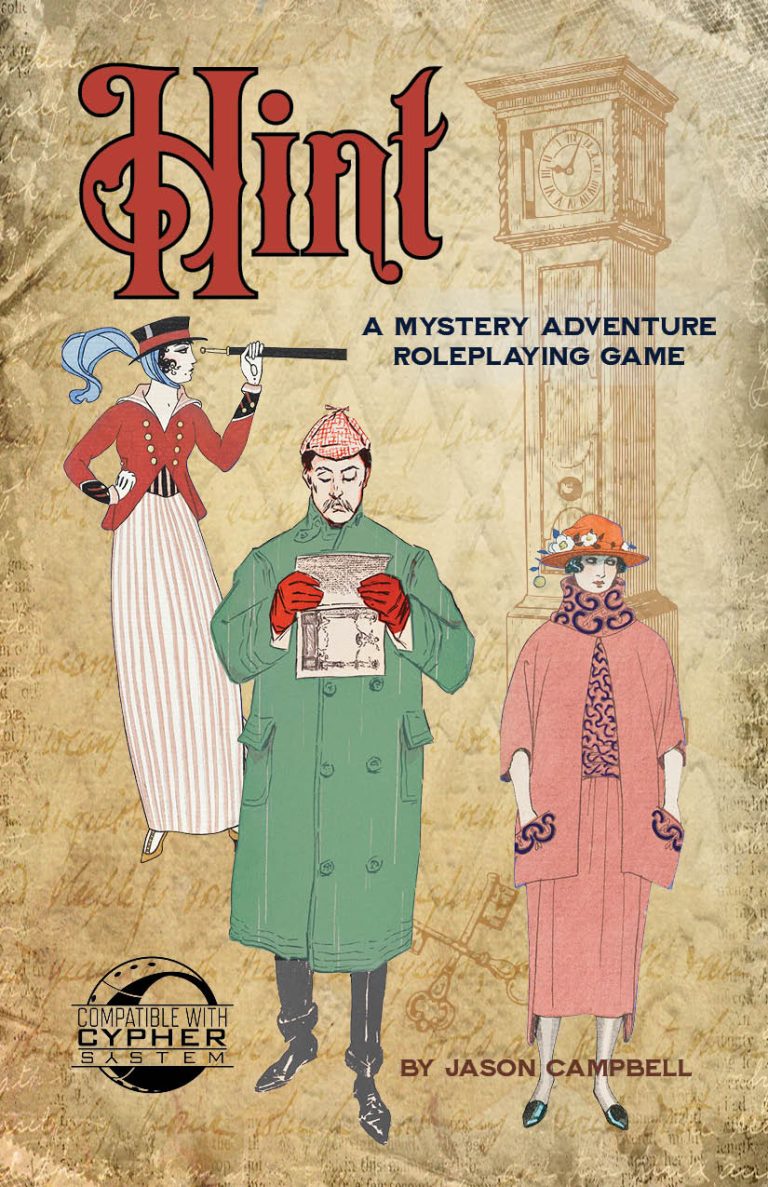By Jason Campbell
In my current 5e campaign set in Ptolus the pcs are 12th level and were trying to keep a magic artifact called the King’s Stone from a demon lord. Both the pcs and the demon were in a maze trying to find the artifact and the pcs arrived a few rounds ahead of the demon lord.
Never Create a Puzzle With Only One Solution
Most advice for modern TTRPGs cautions GMs to not create a puzzle with only a single solution. In this case a “puzzle” could mean any situation that the players must figure out. A puzzle with a single solution can lead to the game stagnating while the players struggle to figure things out. At first it might seem like a fun challenge, but as the session wears on it can lead to frustration.

Instead the advice is to design situations but not solutions. This allows for the players to be creative and hopefully means the situation can be solved more quickly without frustration setting in. In my situation the demon lord had the power to enable an impenetrable shield against magic, and another against physical attacks, and yet another against mental attacks. Does that seem really unfair? Yeah! It’s basically immune to everything!
The trick is that these shields are something the demon has to enable. They don’t require concentration, but they aren’t always “on”. The players received information about this many sessions before, so they could be prepared. The idea is that if the players could somehow keep the demon from enabling the shield before an attack, the attack could succeed. If the demon lord suffered three wounds in this way, he would be defeated. There wasn’t a single solution here, I didn’t know how the pcs would stop the demon lord from enabling his shields, but I gave them lots of time to think about it and they had a few powerful magic items in addition to their considerable powers. I was curious to see what they would come up with.
Giving the Players an Open Ended Magic Power
In the pc’s quest to find the King’s Stone they passed through an ancient temple a few sessions ago and met a spirit who gifted each of them with a single use power of Insight Vision. This is similar to the Secret cypher in the Cypher System, which lets the player ask the GM a question about their current situation. I didn’t outline any restrictions on its use, so it would be up to the players and I to work out how that was resolved.
I should note that I don’t recommend this sort of power for everyone. I’m sure it sets bells off in many GMs’ heads with thoughts of how this could backfire in games. I tend to look at the story as something created by me (GM) + the players + the dice. They aren’t exploring my world or story, we’re building the story together. I also trust in my own ability to improv, so in this case I know the players will use these powers in a way I don’t expect, but I trust that I’ll be able to make up something to make it work. It’s definitely a risky situation, but it hopefully will be fun,
And Then This Happened
The pcs arrived at the King’s Stone a few rounds ahead of the demon lord. They immediately tried to find a way to move the King’s Stone so that the demon wouldn’t find it. The players were very afraid of the demon lord, who they’d heard rumors about since they were 3rd level. I didn’t anticipate that they’d be so desperate to avoid combat, but it certainly made sense. My hope with having a foe that you need to surprise or confuse to defeat was that the players would come up with creative solutions.
The King’s Stone was too large to be moved. On their way to the King’s Stone they’d set a trap for the demon to slow it down, a simple web with a dagger in it. This would normally be too minor to bother a demon lord, but I’d previously decided that navigating to the artifact would be with opposed survival checks. One pc is a minotaur who rolled a 22 survival while the demon rolled a natural 1. I decided that the natural 1 meant something catastrophic, so the demon must have been so haughty he was chasing at top speed without a care to his surroundings, so he was actually wounded by the dagger since he was taken by complete surprise.
In Which the GM is Confronted With His Own Silliness
It turns out the players had not prepared any creative ideas to confront the demon lord. Instead they used two of their Insight Visions to ask questions. I hadn’t limited these to yes or no questions, so they first asked, “How can we move the King’s Stone so the demon won’t get it?”
I didn’t have an answer for this ready, as I’d not anticipated they’d take this tact. So after a moment I’d suggested they use another artifact they already had, which allowed for the manipulation of objects. This was again a magic item with little definition created to allow the players to use it creatively. This artifact would allow the King’s Stone to change it’s form, although it couldn’t destroy or teleport it.
They then asked, “How can we stop the demon from getting into this room?”. I suggested they could use the object manipulation artifact mentioned above to create a barrier, but reminded them that the room had no other exits, so that might not be a great solution. No matter how strong a barrier, a demon lord would be likely to eventually find a way through. They began to cast tiny hut and create a teleportation circle, but the demon was close and they’d need to stall for time.
The wizard in the party summoned a construct to guard the hallway into the room. The fighter readied a crossbow. The fighter/wizard cast haste on the crossbow fighter. The party also had an animated skeleton, who was created from the demonic corpse of one of the demon lord’s followers. At this point we were about ½ way through the session so I suggested we take a 10 minute break, which would also allow the players a few minutes to concoct strategy.
And Creativity Wins the Day
When we returned from the break, the players decided to use the object manipulation artifact to craft the King’s Stone into the form of a magical talking puppet that the pcs had met many months earlier. I hadn’t anticipated this either but it worked out great, as the puppet was fond of giving the pcs helpful information, albeit in the form of annoying rhymed verses. The puppet took this personality and immediately reminded the pcs that they had a magic gem that could defeat the demon lord if he was wounded 3 times. The pcs got the gem ready.
The demon lord arrived and was momentarily surprised at the construct, but more so at the site of his former follower as a skeleton warrior poised to attack. This gave one round without his shields, so the fighter hit him once with a crossbow, loaded with a bonus action and used his second hasted attack and hit the demon lord again. The demon now had three wounds, so he would be vulnerable to the magic gem. The demon used a legendary action to affect all the PCs with fear (which would incapacitate them), and most of the players had to use their inspiration points (I let them collect more than one at a time) to avoid that effect. The following round the construct grappled the demon lord, but the demon lord cast feeblemind on the wizard, which would have caused lot of problems. The player needed to roll a 20, and using an inspiration point earned in an earlier session, just rolled the 20. Then the fighter used the gem to destroy the demon lord and the pcs won the encounter.
Lesson Learned?
Things didn’t go as I’d anticipated, but as all GMs know, that happens all the time, in fact I’d anticipated not being able to anticipate what would happen. I wasn’t going to nerf the demon lord – the feeblemind would have really harmed the wizard and after that the demon would use psychic stream to do 14d6 psychic damage to everyone. But the players succeeded in a few ways:
- The demon lord rolled a natural 1, which I narrated into the unfolding story.
- Using their Insight Visions was a good move.
- Creating an animated skeleton from a fallen demon lieutenant was a cool idea, so having it pay off later in a way they hadn’t anticipated was interesting.
- Prepping a crossbow attack with a haste spell was a good tactical move.
- Using the object manipulation artifact to alter the King’s Stone was a good idea, but choosing the form of the magic talking puppet was really creative. That creativity is what I was hoping for when I gave out open ended magic items and abilities.
So, what do you think? The players took an unanticipated path to victory, but was it something to be rewarded? What would you have done? Let us know in the comments below!





